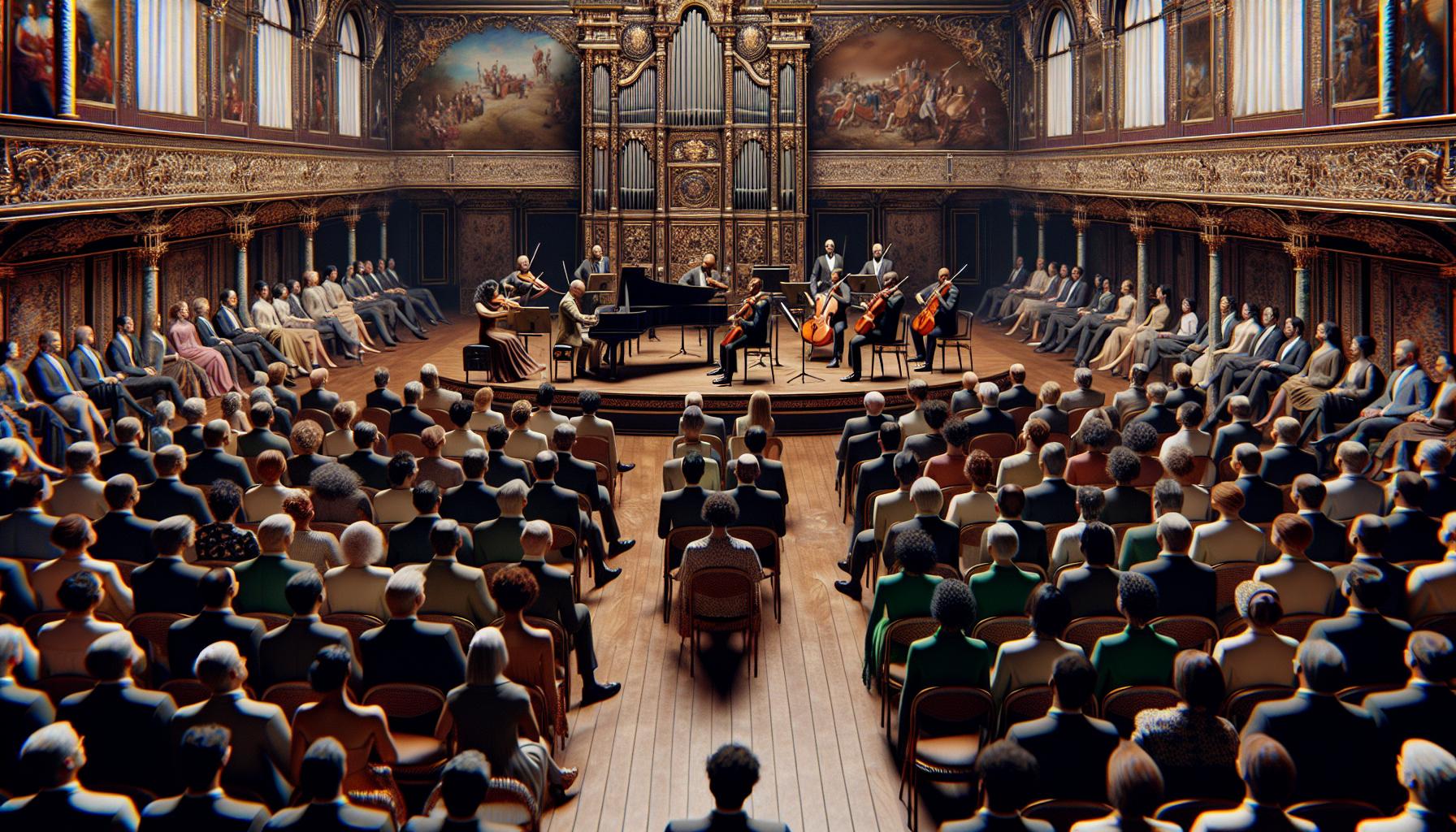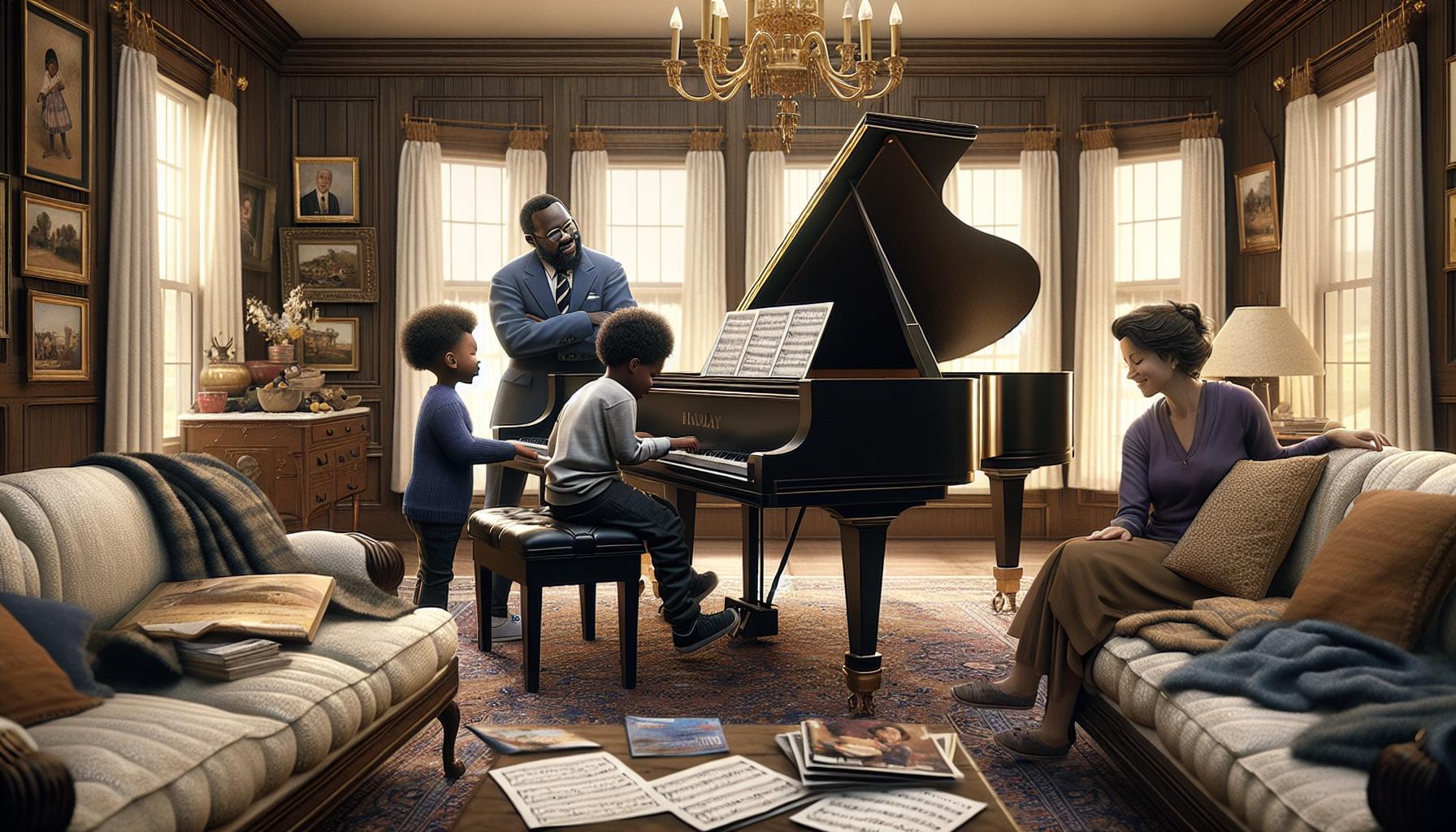Phone:
(701)814-6992
Physical address:
6296 Donnelly Plaza
Ratkeville, Bahamas.

The rise of the middle class during the 18th and 19th centuries dramatically transformed classical music’s landscape, shifting it from exclusive royal courts to public concert halls. This emerging social group’s tastes and preferences reshaped how composers created and performed their works, leading to significant changes in musical composition and presentation.
As the middle class gained economic power they demanded more accessible musical experiences. Concert halls replaced palace chambers while public performances became more common than private recitals. Composers began writing pieces that appealed to middle-class sensibilities focusing on emotional expression and technical brilliance that could captivate larger audiences. This shift marked a pivotal moment in classical music’s evolution from an aristocratic privilege to a form of entertainment enjoyed by a broader segment of society.
Concert venues shifted from exclusive palace gatherings to public performances during the late 18th century. This transformation created new revenue streams through ticket sales enabling composers to earn income directly from audiences.
Concert halls emerged as dedicated music venues accommodating 500-2000 listeners compared to private salons hosting 20-50 guests. Notable examples include Leipzig’s Gewandhaus (1781) Vienna’s Musikverein (1870) replaced aristocratic drawing rooms as primary performance spaces. The architectural design featured enhanced acoustics tiered seating larger stages for full orchestras allowing middle-class audiences to experience professional performances in comfortable settings.
Concert programs adapted to middle-class preferences featuring:
Performance duration shortened to 2-3 hours matching middle-class schedules. Theaters offered seasonal subscriptions at varied price points ranging from premium boxes to affordable gallery seats creating sustainable audience bases across social strata.
| Concert Venue Type | Average Capacity | Typical Ticket Prices (1800s) |
|---|---|---|
| Private Salon | 20-50 | Invitation Only |
| Public Hall | 500-2000 | 2-10 Guilders |
| Theater | 800-1500 | 1-8 Guilders |

Middle-class families prioritized musical education as a marker of social refinement and cultural sophistication in the 18th and 19th centuries. This emphasis on musical training created a robust market for instruments, instruction and printed music.
The piano emerged as the centerpiece of middle-class musical life between 1780-1850. Manufacturers like Broadwood in London and Érard in Paris produced over 50,000 pianos annually by 1850 to meet growing demand. Middle-class families viewed piano ownership as essential for:
| Year | Annual Piano Production | Average Cost (in 1850 Currency) |
|---|---|---|
| 1780 | 5,000 units | £80-100 |
| 1820 | 20,000 units | £60-75 |
| 1850 | 50,000+ units | £30-45 |
| Publication Type | Annual Sales (1850) | Market Share |
|---|---|---|
| Piano Scores | 150,000 copies | 45% |
| Voice & Piano | 100,000 copies | 30% |
| Method Books | 50,000 copies | 15% |
| Chamber Music | 33,000 copies | 10% |
Chamber music emerged as a distinctive genre during the late 18th century, reflecting middle-class preferences for intimate musical gatherings in private homes. Today, innovations like the AI music generator continue this tradition of bringing music into personal spaces. This musical form bridged the gap between grand orchestral performances and solo pieces, creating a new category of classical music tailored to domestic settings.
Chamber music compositions featured small ensembles of 2-8 musicians performing in intimate spaces. String quartets, piano trios, wind quintets provided ideal entertainment for salons, drawing rooms, private clubs. These compositions balanced artistic sophistication with practical considerations:
Middle-class households embraced chamber music as a cornerstone of home entertainment between 1780-1850. The practice of domestic music-making shaped both social interactions and musical composition:
| Aspect | Impact |
|---|---|
| Sheet Music Sales | 500% increase from 1780-1820 |
| Amateur Musicians | 60% of middle-class families participated |
| Music Publishers | 300+ established in major European cities |
The rise of commercial music publishing transformed classical music distribution between 1780-1850, establishing new business models focused on middle-class consumers. Publishing houses developed efficient printing methods to meet growing demand for sheet music across Europe.
Publishing innovations like lithography reduced production costs by 40% between 1810-1830, enabling mass distribution of affordable scores. Major publishing houses like Breitkopf & Härtel and Schott produced over 20,000 editions annually by 1840, with simplified arrangements of orchestral works accounting for 35% of sales. Sheet music prices dropped from 2 thalers to 0.5 thalers per score, making music accessible to middle-class households.
| Publishing Statistics 1780-1850 | Numbers |
|---|---|
| Active Publishers in Europe | 300+ |
| Annual Score Production (1840) | 20,000+ |
| Price Reduction | 75% |
| Simplified Arrangements | 35% |
Publishers targeted middle-class buyers through strategic marketing campaigns:
Middle-class preferences reshaped classical music compositions between 1780-1850, influencing both structural elements and expressive characteristics. These changes marked a departure from the complex aristocratic styles toward more accessible musical forms.
Classical composers adapted their works to suit middle-class attention spans through compact musical structures. Symphony lengths decreased from 45 minutes to 30 minutes on average, while individual movements became more concise. Popular forms included:
| Musical Form | Average Duration 1780 | Average Duration 1830 |
|---|---|---|
| Symphony | 45 minutes | 30 minutes |
| Sonata | 35 minutes | 25 minutes |
| Concert Overture | 15 minutes | 10 minutes |
| Compositional Element | Percentage in Works 1780-1850 |
|---|---|
| Programmatic Titles | 45% increase |
| Dynamic Markings | 65% more frequent |
| Tempo Instructions | 80% more detailed |
| Expressive Annotations | 70% more common |
Classical music transitioned from aristocratic patronage to public funding between 1780-1850, fundamentally changing how composers earned their living. This shift democratized musical production through new financial models centered on middle-class participation.
Subscription concerts emerged as a stable financial model in major European cities by 1800. Leipzig’s Gewandhaus offered 24 annual concerts with tiered pricing from 2-8 thalers, attracting 300-400 regular subscribers. Concert societies established seasonal programs featuring popular works mixed with new compositions, ensuring reliable income for musicians through advance ticket sales. Vienna’s Gesellschaft der Musikfreunde hosted 8-12 subscription concerts annually, reaching 2,000 subscribers by 1830.
Musical societies funded by middle-class subscribers replaced individual aristocratic patrons. The Concerts Spirituels in Paris (founded 1725) pioneered this model with 500 subscribers supporting 24 annual concerts. Similar organizations emerged across Europe:
These societies commissioned new works, paid musicians regular salaries, maintained concert venues, and provided music education programs. Member contributions ranged from 10-50 guilders annually, creating sustainable funding for classical music independent of court patronage.
| City | Society | Members (1830) | Annual Budget |
|---|---|---|---|
| London | Philharmonic Society | 300 | £2,500 |
| Vienna | Gesellschaft der Musikfreunde | 1,200 | 15,000 florins |
| Paris | Concerts Spirituels | 500 | 20,000 francs |
| Berlin | Singakademie | 400 | 8,000 thalers |
The middle class’s influence on classical music stands as a testament to the power of social change in shaping artistic expression. Their economic rise revolutionized how music was composed performed and consumed transforming it from an aristocratic privilege into an accessible art form.
Through their patronage of public concerts investment in music education and demand for accessible compositions the middle class helped create the classical music landscape we know today. They didn’t just support music – they redefined it establishing new venues publishing networks and performance traditions that continue to influence classical music.
The legacy of this transformation lives on in modern concert halls music education and the enduring popularity of classical music among diverse audiences worldwide. It’s a powerful reminder of how cultural democratization can enrich and sustain artistic traditions for generations to come.